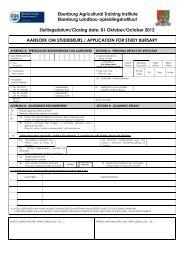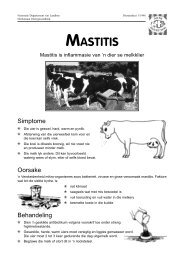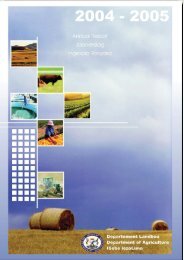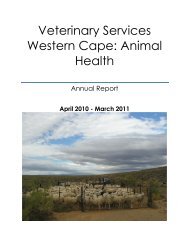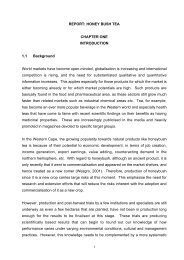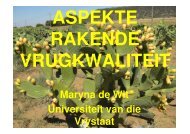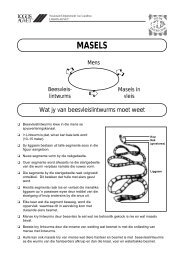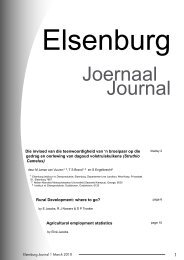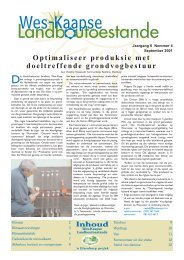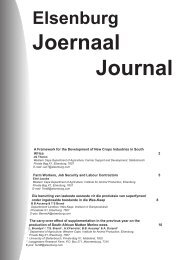The PROVIDE Project Standard Computable General Equilibrium ...
The PROVIDE Project Standard Computable General Equilibrium ...
The PROVIDE Project Standard Computable General Equilibrium ...
Create successful ePaper yourself
Turn your PDF publications into a flip-book with our unique Google optimized e-Paper software.
<strong>PROVIDE</strong> <strong>Project</strong> Technical Paper 2003: 3 October 2003<br />
are the same as those in the corresponding sub matrix of the SAM. <strong>The</strong> second series of<br />
additional data are the elasticities of substitution for imports and exports relative to domestic<br />
commodities, the elasticities of substitution for the CES production functions, the income<br />
elasticities of demand for the linear expenditure system and the Frisch (marginal utility of<br />
income) parameters for each household.<br />
All the data are recorded in a GDX (GAMS data exchange) file. <strong>The</strong> code for converting<br />
the data from separate worksheets in an MS Excel workbook into a GDX file is included at<br />
the end of the data entry section.<br />
2. <strong>The</strong> <strong>Computable</strong> <strong>General</strong> <strong>Equilibrium</strong> Model<br />
<strong>The</strong> model is a member of the class of single country computable general equilibrium (CGE)<br />
models that are descendants of the approach to CGE modeling described by Dervis et al.,<br />
(1982). More specifically, the implementation of this model, using the GAMS (<strong>General</strong><br />
Algebraic Modeling System) software, is a direct descendant and development of models<br />
devised in the late 1980s and early 1990s, particularly those models reported by Robinson et<br />
al., (1990), Kilkenny (1991) and Devarajan et al., (1994). <strong>The</strong> model is a SAM based CGE<br />
model, wherein the SAM serves to identify the agents in the economy and provides the<br />
database with which the model is calibrated. Since the model is SAM based it contains the<br />
important assumption of the law of one price, i.e., prices are common across the rows of the<br />
SAM. 3 <strong>The</strong> SAM also serves an important organisational role since the groups of agents<br />
identified by the SAM structure are also used to define sub-matrices of the SAM for which<br />
behavioural relationships need to be defined. As such the modeling approach has been<br />
influenced by Pyatt’s ‘SAM Approach to Modeling’ (Pyatt, 1989).<br />
<strong>The</strong> description of the model proceeds in five stages. <strong>The</strong> first stage is the identification of<br />
the behavioural relationships; these are defined by reference to the sub matrices of the SAM<br />
within which the associated transactions are recorded. <strong>The</strong> second stage is definitional, and<br />
involves the identification of the components of the transactions recorded in the SAM, while<br />
giving more substance to the behavioural relationships, especially with those governing interinstitutional<br />
transactions, and in the process defining the notation. <strong>The</strong> third stage uses a pair<br />
of figures to explain the nature of the price and quantity systems for commodity and activity<br />
accounts that are embodied within the model. In the fourth stage an algebraic statement of the<br />
model is provided; the model’s equations are summarised in a table that also provides<br />
(generic) counts of the model’s equations and variables. A full listing of the parameters and<br />
3 <strong>The</strong> one apparent exception to this is for exports. However the model implicitly creates a separate set of<br />
export commodity accounts and thereby preserves the ‘law of one price’, hence the SAM representation in<br />
the text is actually a somewhat condensed version of the SAM used in the model.<br />
© S. McDonald<br />
3




